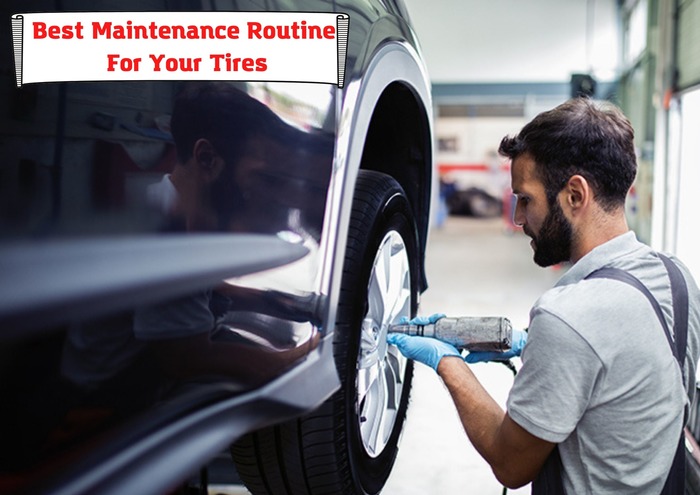
The Subaru BRZ happens to be one of the most affordable sports cars on the market. This rear-wheel-drive coupe isn’t just good-looking but also, offers a surprisingly economical and brilliantly fun driving experience. But like any other car model, a time will come when you need to replace the tires.
So, you’ve probably realized that you need tire replacement sooner than later. And you want to know which tires are best for your car considering that you live in a region that enjoys all the seasons of nature. If that’s true, then you’re reading the right post. We’ve prepared a quick guide on everything you need to know to choose suitable BRZ tires for all conditions.
The Need For All Condition BRZ Tires
Your BRZ needs the perfect set of tires to facilitate a quality ride, fuel economy, and most importantly, safety. All condition (all-season) tires are designed to put up with situations like snow, rain, and sleet. You can ensure your safety and those you share the roads with by using these tires in your car.
All-season tires are designed with the ability to keep your BRZ grounded strongly to the road throughout the trip. Their improved traction and compounded tread patterns allow greater control over your vehicle on wet surfaces.
The tires remain effective even in temperatures as low as 4 degrees Celsius. Moreover, they come with a longer lifespan than tires made for specific weather conditions. All-season tires can also handle different terrains without a problem. Tires for all seasons cost a little more than standard tires in the market. The price is worth it based on the benefits that they offer.
How To Choose BRZ Tires For All Conditions
The following are the critical aspects you need to consider when you’re out there shopping for all-season tires.
Tubeless/Tube-type
The tube-type tires have almost become a thing of the past, and tubeless tires have taken over. Tube-free tires enable a smoother ride. They also enhance safety thanks to their improved traction, especially in rough terrains.
Tire Type
Manufacturers represent tire types with letters. P shows passenger tires, which regularly fit most passenger vehicles. LP stands for Light Truck, tires with improved load-carrying capacities. ST stands for Special Trailer, tires having thicker sidewalls to support larger vertical loads. Lastly, T stands for temporary, which are standard spare tires.
Tire Size
The perfect tire size for your BRZ depends on its rim size, which varies depending on the vehicle’s production year. For instance, the Subaru BRZ 2018 model comes with rim sizes 17-inch or 18-inch. You must select all-season tires that match these rims.
Tread Pattern
As mentioned, all-season tires come with a complex tread pattern to provide optimal traction in icy, wet, and sandy conditions. There are four types of tread patterns; directional, asymmetrical, symmetrical, and directional/asymmetrical.
A directional/asymmetrical tread pattern is the best for all-season tires. Ensure that the tires have the ideal tread depth of at least 6/32.
Speed Index
It indicates the speed at which the tire dissipates heat effectively. Rubber tends to wear faster the more it gets heated. You can experience tire failure issues if you go beyond the fixed maximum your tire has. The standard rates for all-season tires are S (112 mph) and T (118 mph). These rates are suitable for a BRZ that hits long trips on highways.
UTQG Code
This code indicates estimates of three tire qualities based on tests done by a manufacturer. They are traction, tread-wear, and temperature resistance.
Traction – Manufacturers represent this characteristic in letters: C, B, A, AA, from the worst to the best. Traction test evaluates a vehicle’s stopping on wet roads. The coefficient is measured in g (g-force).
Tread-wear – Expressed in a 3-digit code, for example, 100 or 200. In this case, 100 indicates normal wear, while 200 means twice as much. The estimate is usually based on the tests conducted by the particular manufacturer.
Temperature resistance – The quality is expressed in letters: C, B, A and measured in miles per hour (mph). Temperature resistance indicates the speed at which a tire can dissipate heat safely. C stands for 85 to 100mph, B for 100-115mph, and A for 115+ mph.
Load Index
It’s a two or three-digit number and indicates the amount of weight a tire can accommodate comfortably. You’ll see numbers from 60 (550lb) to 139 (5357lb).
Note: Keep away from tires over 6 months old; check the manufacturing date, and fine print warranty. The quality may vary from one manufacturer to another. So, you have to purchase your tires from a reputable producer. Well-established brands back their tires up with lengthy warranties, which is a sign of confidence that their tires are superb.
Best Maintenance Routine For Your Tires

Tires are expensive, and you may not afford to replace them often. Thus, you want your tires to give you a good and lasting service. But there are certain maintenance practices you must do for your tires to provide value for money:
- Tire pressure – Check tire pressure once every month. Your owner manual should indicate the right amount of air pressure to maintain.
- Wheels alignment – Ensure you check the balance and alignment of your wheels yearly. Misaligned or unbalanced wheels can cause irregular tread-wear and ultimately shorten tire lifespan.
- Tread-wear inspection – Damaged or worn-out treads can be very dangerous. They reduce traction, affect your stopping distance, and increase your chance of crashing. Take your BRZ for professional tire tread inspection regularly. The professionals will identify any signs of aging and advice you accordingly.
- Tire rotation – Rotate your BRZ tires regularly. Again, your car’s owner manual should indicate the frequency at which you should rotate the tires.
How Many Miles For Your All Conditions Tires?
It’s hard to say for sure how long your all-condition tires will last. That’s because many factors affect their lifespan, including your driving style, maintenance, conditions, quality, etc. Averagely, a good-quality tire should last anywhere between 3 and 5 years or about 60,000 miles if you drive between 12,000 and 15,000 miles yearly.
Some manufacturers offer up to 80,000 miles warranty on their tires. That shows such tires are top-notch, and the manufacturer is confident that they will stand the test of time.
When Should You Replace Your Tires?
Tire and vehicle manufacturers recommend that you start thinking about tire replacement if their tread depth is 4/32. When the tread depth is at 2/32, the tires are worn-out completely and shouldn’t be on the road. But, regardless of the tread depth, you should consider replacing tires that are more than 6 years old.
At this age, the quality of the rubber compounds in the tires deteriorates with time causing dry rot. This dry rot makes tires more susceptible to tread separation and blowouts. Some tires can go up to 10 years, depending on your driving style. Still, don’t wait until your BRZ tires are too old to replace!
Final Thought
Buying the best tires for BRZ doesn’t have to be a headache. Secure the perfect set of all-season tires for your Subaru, and you’ll be good to hit the road. With these types of tires, you can comfortably and safely drive your car under any weather condition without a problem.
Make sure you practice a good tire maintenance routine to enjoy years of excellent service. Take your car for a professional tire inspection to assess the condition of your tires. Whenever you need to replace them, use the insight we’ve provided in this post to purchase the right tires for your car.
About the authors
The CarAraC research team is composed of seasoned auto mechanics and automotive industry professionals, including individuals with advanced degrees and certifications in their field. Our team members boast prestigious credentials, reflecting their extensive knowledge and skills. These qualifications include: IMI: Institute of the Motor Industry, ASE-Certified Master Automobile Technicians; Coventry University, Graduate of MA in Automotive Journalism; Politecnico di Torino, Italy, MS Automotive Engineering; Ss. Cyril and Methodius University in Skopje, Mechanical University in Skopje; TOC Automotive College; DHA Suffa University, Department of Mechanical Engineering






Add comment